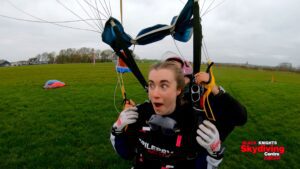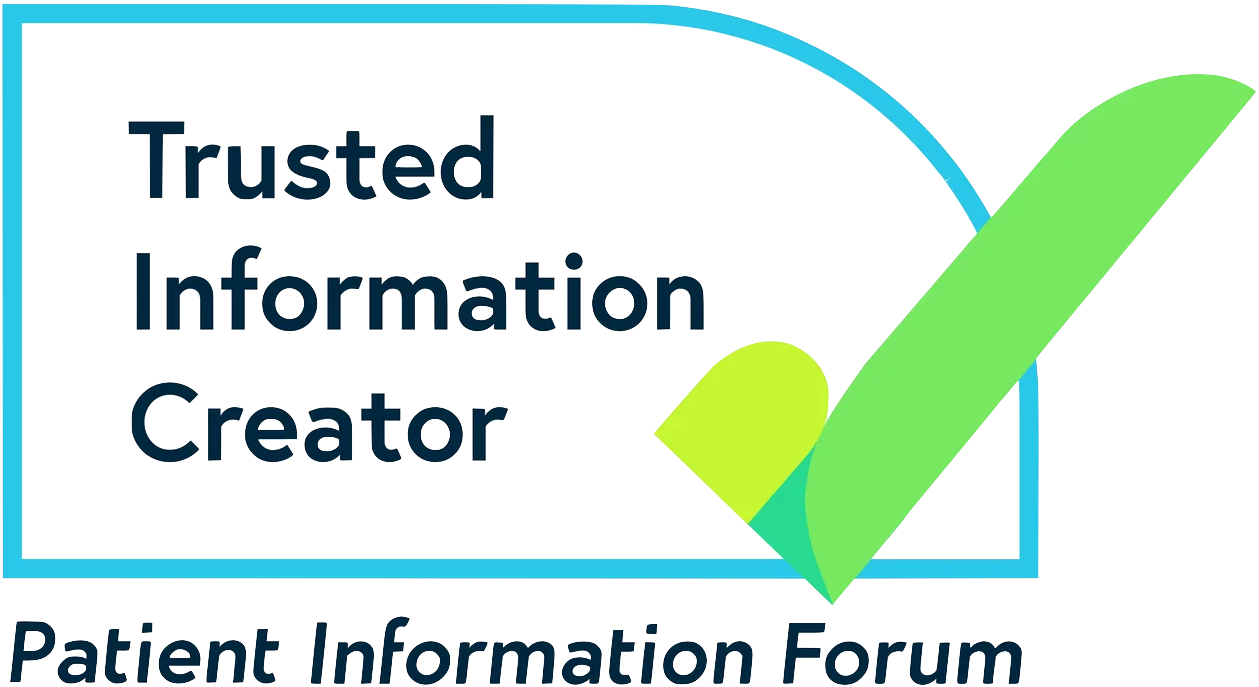Child is referred to CESS by their epilepsy specialist
Find out more about CESS
Key points
- Your child might benefit from epilepsy surgery if their seizures are not well controlled with medicines
- CESS helps children in in England, Wales, and Northern Ireland access epilepsy surgery. Children in Scotland use a different service
- Once your child is referred to CESS, they will have several tests and scans. These will help doctors understand more about your child’s epilepsy, and whether surgery could be an option
- If surgery is not an option, the CESS team will also consider whether other treatments could help your child. This may include vagus nerve stimulation
What is CESS?
The Children’s Epilepsy Surgery Service, or CESS, was set up in England to help children with complex or drug-resistant epilepsy. This is epilepsy that is not well controlled by medicines.
The service aims to improve access for children who could benefit from surgery. Epilepsy surgery can be life-changing for children. Overall, at least 6 in every 10 children who have surgery will stop having seizures.
Studies suggest that at least 300 children in England could benefit from epilepsy surgery each year. However, the number of children who actually have surgery every year is much lower. One aim of CESS is to help more children access surgery.
You can ask your epilepsy specialist to refer your child to CESS if you want an assessment for surgery.
Where are CESS centres located?
There are four CESS centres in England. These are located at hospitals in:
- Birmingham
- London
- Bristol
- Manchester/Liverpool (NorCESS)
CESS centres will treat children from all over England, not just those in their local area. Full contact details for each centre are at the bottom of the page.
If you live in Wales or Northern Ireland
Children in Wales and Northern Ireland who need epilepsy surgery are referred to a CESS centre in England for treatment. This is arranged on an individual basis by your local epilepsy specialist. This may be a paediatrician (child specialist) or neurologist.
If you live in Scotland
Scotland has a separate service called the Scottish Paediatric Epilepsy Surgery Service (SPESS). CESS can also provide services to families in Scotland if their child lives or goes to school in England.
When is my child referred to CESS?
Your child’s doctor can refer your child to CESS. They may do this if your child’s epilepsy is not well controlled with medicines and they think surgery could help.
For example, your child might have one of the following:
- Severe epilepsy that started in the first few years of life, and is thought to come from a single part of their brain
- An MRI brain scan showing a problem in one or more parts of the brain. An example might be a benign tumour or a hypothalamic hamartoma
- Focal Epilepsy (also called partial epilepsy) that has not been controlled with two epilepsy medicines, used either separately or together
- A weakness down one side of the body (hemiplegia) and epilepsy that has not been controlled with two epilepsy medicines. These medicines can be used separately or together
- Sturge-Weber syndrome
- Rasmussen’s syndrome
- Atonic seizures (drop attacks)
- Tuberous sclerosis complex (TSC) with epilepsy that has not been controlled by two epilepsy medicines. These medicines can be used separately or together
What if my child has a different type of epilepsy?
Your child’s type of epilepsy may not fit the criteria above. But the doctor might still be able to refer your child to a CESS centre for assessment if they have drug-resistant epilepsy.
Definitions of drug-resistant epilepsy vary. It generally means that:
- Your child’s seizures have not been controlled after trying at least two different epilepsy medicines
- Further medicines are unlikely to help
Ask your epilepsy specialist if you are wondering whether a CESS referral could help your child.
Is there an age limit for CESS referral?
CESS centres will generally accept referrals for anyone up to the age of 18. There is no younger age limit for referring children to CESS.
After you reach 18 you will usually be referred to a specialist centre for adult epilepsy surgery. If you are already in the CESS programme on your 18th birthday, the service can continue to treat you until your 19th birthday.
What happens after my child is referred to CESS?
The specialist epilepsy team will need to find out more about your child’s seizures and the type of epilepsy they have. They will probably recommend several different tests and scans.
This process usually takes some months to complete. Sometimes it can happen more quickly. It will involve several visits to hospital as an outpatient. Your child may also need to stay several days in hospital for some of these tests. We talk more about these tests below.
Going through the whole CESS process can sometimes take quite a long time. You may have a lot of different feelings as you go through.
From online groups to 1:1 Peer Support, we can offer you the support you need. Call our Helpline on 0808 800 5050 or go to our support page to find out more.
Overview of the CESS process
What tests and scans will my child need?
Below are some of the tests that your child may need as part of the CESS assessment. The tests help the doctors find out more about your child’s epilepsy, and if surgery or another treatment could help.
Your child may not need all these tests. The specialist epilepsy team will decide which ones are most useful.
-
EEG and video telemetry
EEG stands for electroencephalogram. EEG and telemetry tests tell the doctors about electrical activity in the brain. This can help them to find out more about your child’s seizures.
EEG
During an EEG, your child will sit or lie down. The person doing the test will attach the electrodes to your child’s head with a sticky gel. They may ask them to breathe deeply for some minutes and to look at a flashing light. These activities can change the electrical activity in your child’s brain, and this will show on the computer.
Watch a short video called ‘A child’s guide to an EEG’, made by the UK charity Young Epilepsy.
Video telemetry
During video telemetry, a video recording is made at the same time as the EEG. This helps doctors to see what happens if your child has a seizure. It can help them to understand exactly which part of the brain the seizures are coming from.
Video telemetry requires continuous video monitoring and can involve a hospital stay of a few days. In some circumstances both EEG and video telemetry may also be able to be carried out at home.
Find out more about EEG and video telemetry tests for epilepsy.
-
Invasive monitoring
Some children might need invasive EEG telemetry. This is a more specialised form of monitoring. It can help doctors locate where seizures are coming from in the brain. It can also tell if that area of the brain has an important function.
Invasive telemetry involves an operation to place electrodes in or around the brain. The electrodes are attached to an EEG monitor and brain activity is recorded over several days. This procedure usually involves a stay in hospital of around 2 weeks.
- Stereo-EEG or sEEG: This is where electrodes are carefully placed in the brain through small holes in the skull. This type of EEG is useful for looking deeper into the brain.
- Strip or grid electrodes: Electrodes are placed directly on the surface of the brain. These types of electrodes are useful for ‘functional brain mapping’. This can show which parts of the brain control essential functions like speech, or movement. Brain surgeons use functional brain mapping to reduce the risk of any complications after epilepsy surgery
-
MRI Scan
MRI stands for magnetic resonance imaging. An MRI scan uses a strong magnetic field and radio waves to create images inside the body.
During an MRI scan the person lies on a bed that is moved inside the scanner. The scanner is a large tube surrounded by strong magnets. It can be quite noisy inside an MRI scanner, but it doesn’t hurt. You are given earplugs or headphones to help with the noise.
Children can have MRI scans under sedation or general anaesthetic, or they can be fully awake.
Find out more about MRI scans for epilepsy.
-
Functional MRI scan
Functional MRI (fMRI) is like the MRI scan. But your child is also asked to do small tasks during the scan, such as tapping a finger, or answering questions.
These activities increase the flow of oxygen-rich blood to a particular part of the brain. This helps doctors to see which parts of the brain manage important tasks such as language, memory, and movement.
-
PET scan
PET scans can show how parts of the brain are working and using energy. A special dye, called a radiotracer, is injected into the arm. This dye does not hurt. It is used to gather information about the brain and highlight areas of the brain that might be causing seizures.
PET stands for positron emission tomography.
-
SPECT scan
SPECT scans can measure blood flow in the brain. Similar to PET scans, your child is given an injection of a special dye into a vein which shows up on the scan.
Usually, blood flow is highest in the part of the brain where seizures start. Two scans might be used to help doctors compare blood flow during a seizure with blood flow between seizures.
SPECT stands for single-photon emission computed tomography.
-
MEG scan
MEG scans measure brain activity by picking up tiny changes in the brain’s magnetic field. It can tell which parts of the brain are active during a certain task. It can also help show where seizures start in the brain.
MEG stands for magnetoencephalography.
Psychological support
Mental health professionals also work closely with epilepsy specialist teams in CESS. These include neuropsychologists and neuropsychiatrists.
They can help by:
- Carrying out assessment tests. These can help doctors understand how your child’s epilepsy is affecting the development of skills such as memory and language. This can help with decisions around surgery
- Advising the CESS team how to support your child’s emotional and mental health needs
- Talking with you and your child about thoughts and feelings as you navigate the CESS process
Other assessments and support
Your child might have other types of assessments during the CESS process. These can depend on the type of epilepsy and challenges they have:
- Speech and language assessments
- Development assessments
- Vision assessments, particularly peripheral vision (side vision)
- Occupational therapy needs
- Physiotherapy needs
What happens next?
The epilepsy specialist team will look at all the results of these assessments. They will use them to decide whether they think epilepsy surgery could be an option for your child.
There are several types of epilepsy brain surgery. The surgery chosen will depend on your child’s type of seizures, and where the seizures begin in their brain.
More information about epilepsy surgery for children
Find out about the different types of epilepsy surgery on our separate children’s surgery page.
You can also find out about:
What if surgery is not possible?
Unfortunately, surgery is not always possible. If surgery is not currently an option for your child, the epilepsy team will discuss with you whether other types of non-drug treatment could be helpful.
They will also develop a plan for managing your child’s epilepsy. They will then refer you on to others who can help, or back to your local epilepsy specialist.
Here are some different options that your child may be offered instead of surgery.
Watching and waiting
For some children, the team might recommend ‘watching and waiting’ for a period of time. This is so they can understand more about your child’s epilepsy. It can help the team make a better decision about whether epilepsy surgery could help your child.
Vagus nerve stimulation (VNS) therapy
VNS therapy might be offered if your child is not able to have epilepsy brain surgery. The aim of VNS therapy is to reduce the number of seizures and make them less severe. It is used as an add-on therapy alongside epilepsy medicine.
Find out more about this treatment on our VNS therapy page.
Ketogenic diet therapy
The ketogenic diet is a specialist diet that must be used under medical supervision. It is sometimes used as a treatment for epilepsy. Your epilepsy team may be able to refer your child to specialist dietitians and consultants who can help.
Read more about this on our ketogenic diet page.
Contact details for the CESS centres
Birmingham
Birmingham Children’s Hospital NHS Foundation Trust
Steelhouse Lane
Birmingham
B4 6NH
Tel: 0121 333 8184, 8180 and 8158
Bristol
Bristol Royal Hospital for Children
Department of Paediatric Neurology
Level 6 Research & Education Centre
Upper Maudlin Street
Bristol
BS2 8AE
Tel: 0117 3427935, 0117 3427934
London
Great Ormond Street Hospital for Children NHS Foundation Trust
Great Ormond Street
London
WC1N 3JH
Tel: 020 7405 9200 extension 5594
Great Ormond Street Hospital CESS webpage
King’s College Hospital NHS Foundation Trust
Denmark Hill
London
SE5 9RS
Tel: 020 3299 3560
King’s College Hospital epilepsy webpage
The Northern Children’s Epilepsy Surgery Services (NorCESS)
NorCESS – Department of Paediatric Neurology,
2nd Floor (WARD 83),
Royal Manchester Children’s Hospital
Hathersage Road,
Manchester
M13 9WL
Tel: 0161 701 0769
Email: nor.cess@nhs.net
-
Sources
Harris, WB et al., (2022), Long-Term Outcomes of Pediatric Epilepsy Surgery: Individual Participant Data and Study Level Meta-Analyses. Seizure: European Journal of Epilepsy, 101, pp. 227–36, Available at: https://doi.org/10.1016/j.seizure.2022.08.010
Mitakidou, MR, et al., (2024), 6012 Referral Rates to the Regional Epilepsy Clinic & Epilepsy Surgery Pathway from a District General Hospital Paediatric Secondary Epilepsy Service. Archives of Disease in Childhood, 109(1): A187–A187, Available at: https://doi.org/10.1136/archdischild-2024-rcpch.283
NHS England (2018) Children’s Epilepsy Surgery Service (CESS), Available at: https://www.england.nhs.uk/commissioning/spec-services/npc-crg/group-e/e04/ (Accessed: 14 January 2025)
Epilepsy 12 (2024) National Clinical Audit of Seizures and Epilepsies for Children and Young People, Available at: https://www.rcpch.ac.uk/resources/epilepsy12-national-organisational-audit-clinical-audit-2024 (Accessed: 14 January 2025)
Welsh Health Specialised Services Committee (2022) Children’s Epilepsy Surgery Services (CESS), Available at: https://whssc.nhs.wales/commissioning/whssc-policies/paediatric-services/paediatric-epilepsy-commissioning-policy-cp174-september-2022/, (Accessed: 14 January 2025)
NICE (2022) Epilepsies in children, young people and adults: Terms used in this guideline, Available at: https://www.nice.org.uk/guidance/ng217/chapter/terms-used-in-this-guideline#drug-resistant-epilepsy (Accessed: 10 February 2025)
Nelson, F, et al., (2021), Parents’ Experiences of Their Child’s Assessment on an Epilepsy Surgery Pathway: A Qualitative Study. Seizure, 91, pp. 456–61. Available at: https://doi.org/10.1016/j.seizure.2021.07.015.
Pati, S, et al., (2024), Stereoelectroencephalography of the Deep Brain: Basal Ganglia and Thalami. Journal of Clinical Neurophysiology: Official Publication of the American Electroencephalographic Society, 41(5), pp. 423–29. Available at: https://doi.org/10.1097/WNP.0000000000001097
Parida A, and Shakti A, (2021), Children’s Epilepsy Surgery: A Concise Review. New Advances and Fundamental Concepts for the Paediatrician. Available at: https://www.researchgate.net/publication/351029449
Birmingham Women’s and Children’s NHS Foundation Trust (no date), Invasive monitoring with Stereoelectroencephalography (sEEG), Available at: https://bwc.nhs.uk/invasive-monitoring-with-stereoelectroencephalography-seeg (Accessed: 14 January 2025)
Great Ormond Street Hospital for Children NHS Foundation Trust (2024), Invasive EEG monitoring, Available at: https://www.gosh.nhs.uk/conditions-and-treatments/procedures-and-treatments/invasive-monitoring/ (Accessed: 14 January 2025)
Birmingham Women’s and Children’s NHS Foundation Trust (no date), Investigations, Available at: https://bwc.nhs.uk/investigations (Accessed: 14 January 2025)
Great Ormond Street Hospital for Children NHS Foundation Trust (2019), MEG Scans, Available at: https://www.gosh.nhs.uk/conditions-and-treatments/procedures-and-treatments/meg-scans/ (Accessed: 14 January 2025) /
NHS (2022), MRI Scan, Overview, Available at: https://www.nhs.uk/conditions/mri-scan/ (Accessed: 14 January 2025)
NHS (2022), MRI Scan, How it’s performed, Available at: https://www.nhs.uk/conditions/mri-scan/what-happens/ (Accessed: 14 January 2025)
Great Ormond Street Hospital for Children NHS Foundation Trust (2019), Functional magnetic resonance imaging (fMRI), Available at: https://www.gosh.nhs.uk/conditions-and-treatments/procedures-and-treatments/functional-magnetic-resonance-imaging-fmri/ (Accessed: 14 January 2025)
Great Ormond Street Hospital for Children NHS Foundation Trust (2019), Surgery for Epilepsy, Available at: https://www.gosh.nhs.uk/conditions-and-treatments/procedures-and-treatments/surgery-epilepsy/ (Accessed: 14 January 2025)
Birmingham Women’s and Children’s NHS Foundation Trust (no date), Neuropsychology, Available at: https://bwc.nhs.uk/neuropsychology (Accessed: 14 January 2025)
Alder Hey Children’s NHS Foundation Trust (2023), Epilepsy Surgery, Available at: https://www.alderhey.nhs.uk/services/epilepsy-surgery/, (Accessed: 14 January 2025)
Thank you to the team at Bristol Royal Hospital for Children CESS and people affected by epilepsy for their help contributing to and reviewing this content.
Find out more about how you can help us create our health information.






